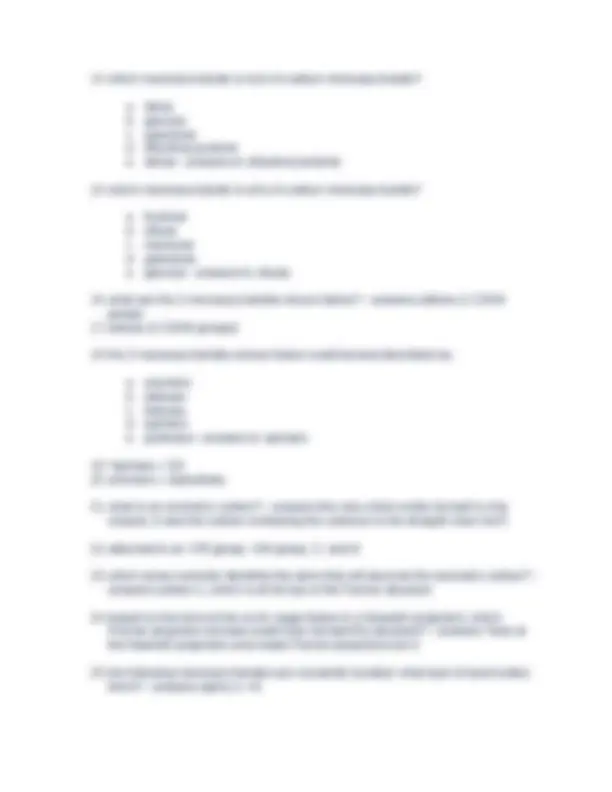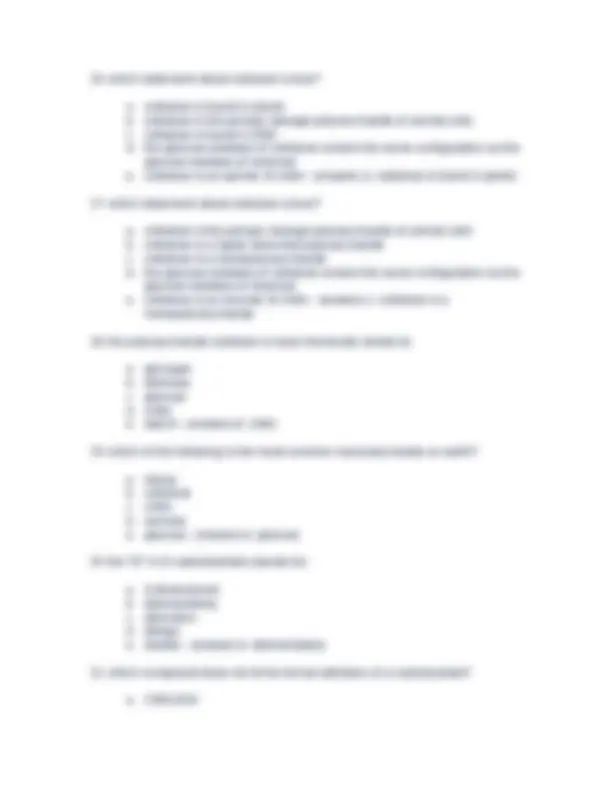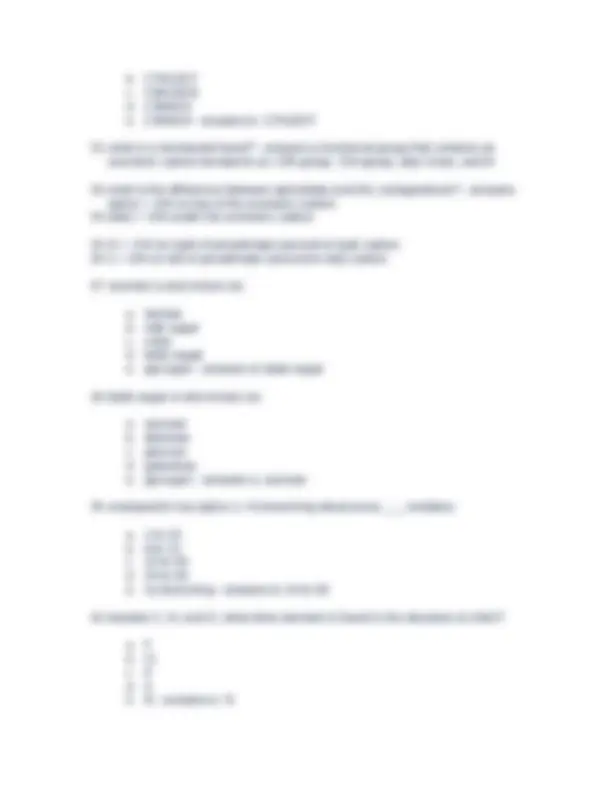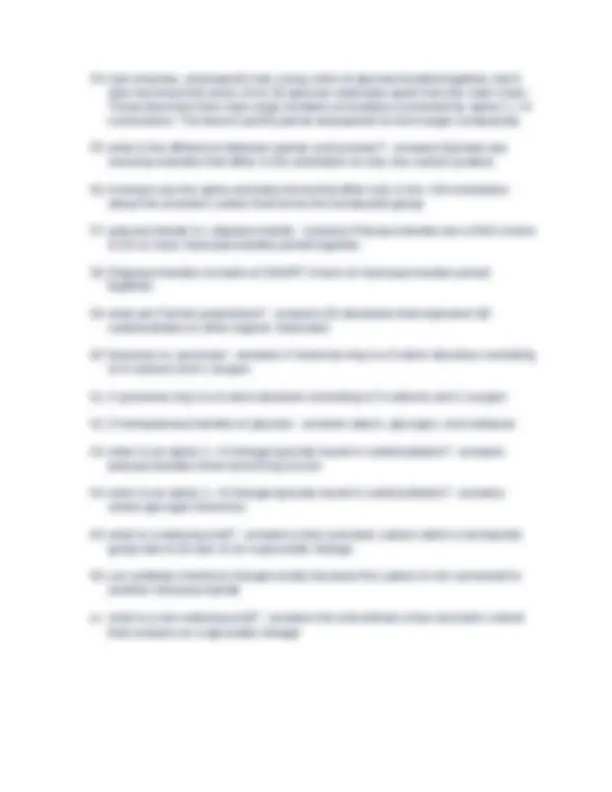






Study with the several resources on Docsity

Earn points by helping other students or get them with a premium plan


Prepare for your exams
Study with the several resources on Docsity

Earn points to download
Earn points by helping other students or get them with a premium plan
Community
Ask the community for help and clear up your study doubts
Discover the best universities in your country according to Docsity users
Free resources
Download our free guides on studying techniques, anxiety management strategies, and thesis advice from Docsity tutors
A set of exam questions and answers related to biochemistry module 4. The questions cover topics such as monosaccharides, oligosaccharides, and polysaccharides, their structures, functions, and linkages. The document also includes explanations of terms such as hemiacetal bond, mutarotation, and reducing sugar. Additionally, it explains why humans cannot use cellulose as a nutrient and why table sugar dissolves easily in water. useful for students studying biochemistry and related fields.
Typology: Exams
1 / 8

This page cannot be seen from the preview
Don't miss anything!





c. water is released d. an epimer is formed e. an aldose is formed - answers c. water is released
b. C7H10O c. C8H16O d. C3H6O e. C4H8O4 - answers b. C7H10O